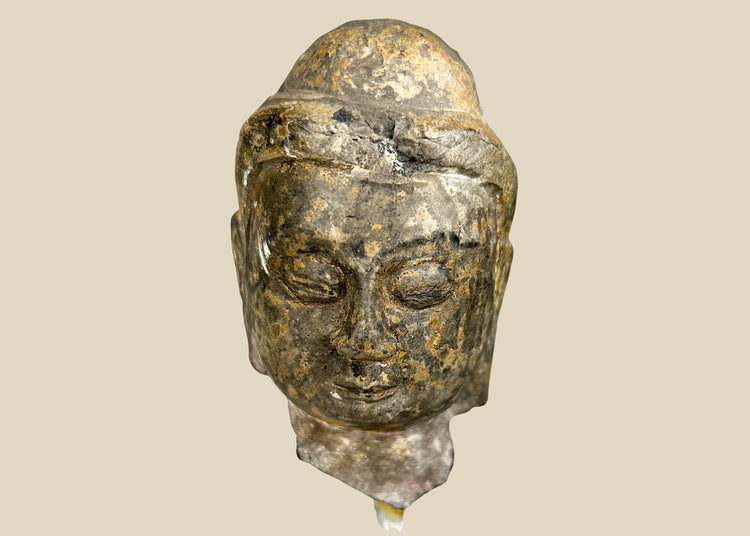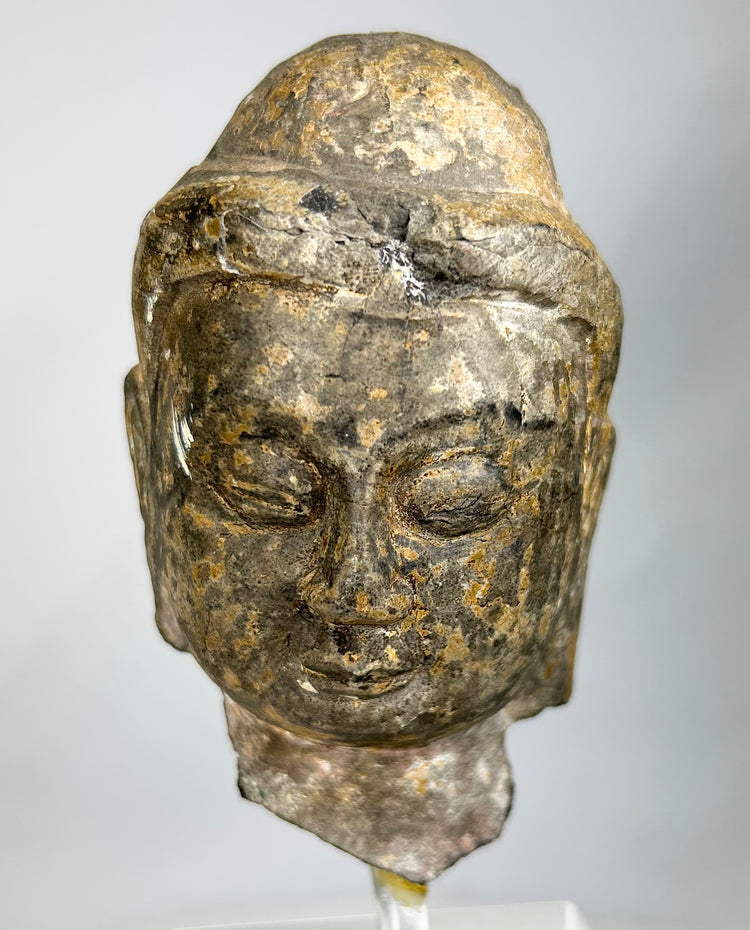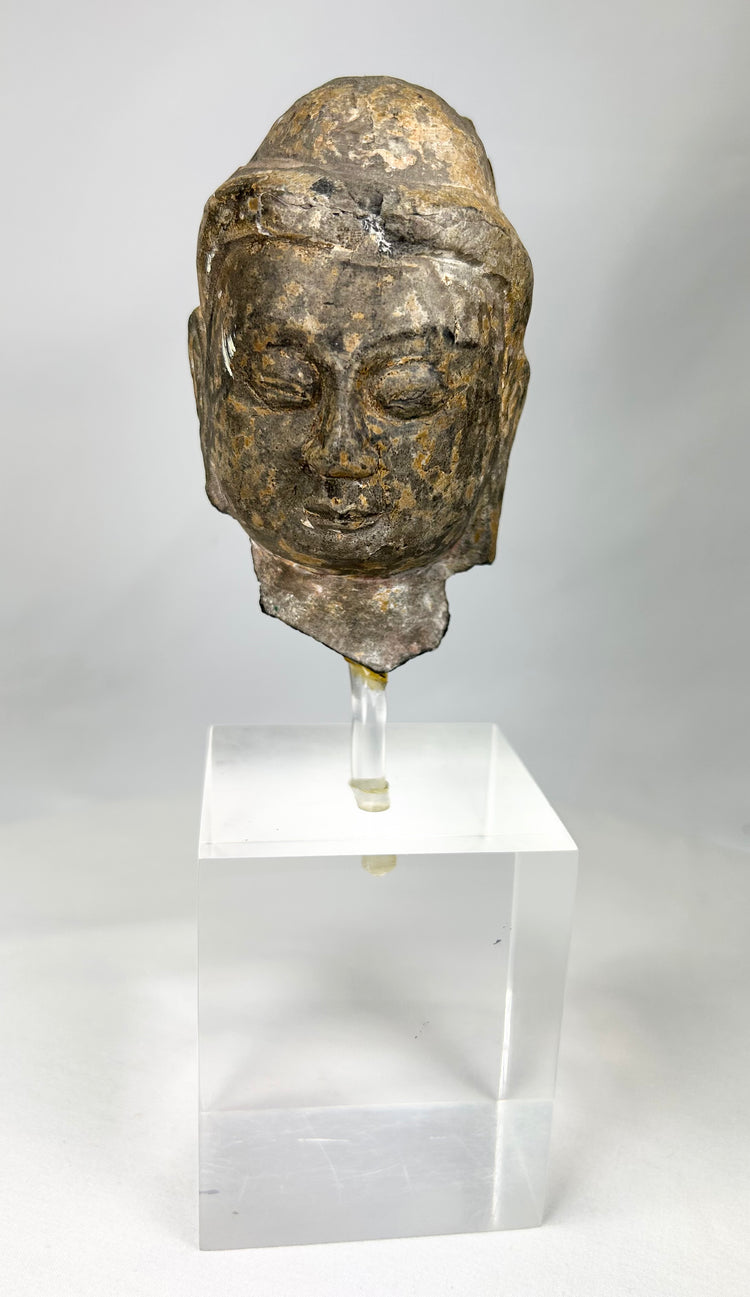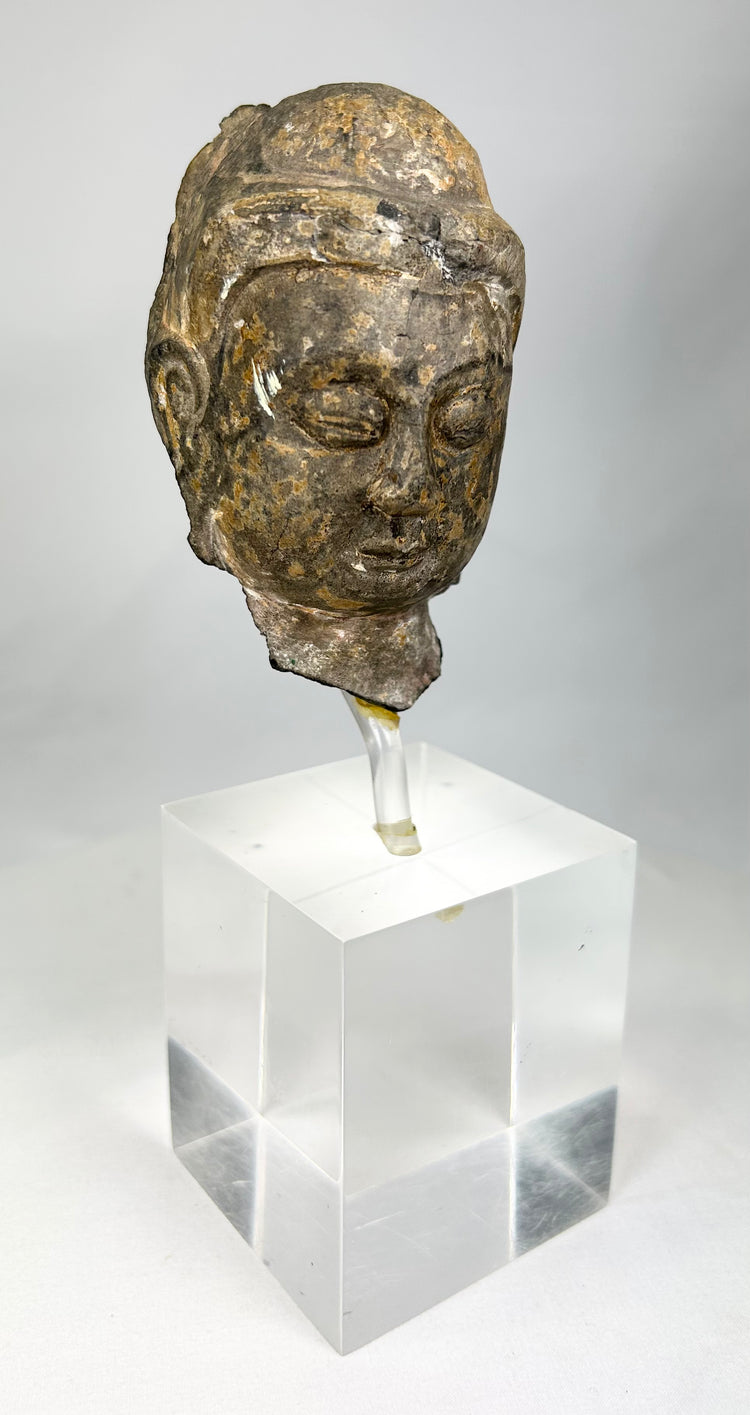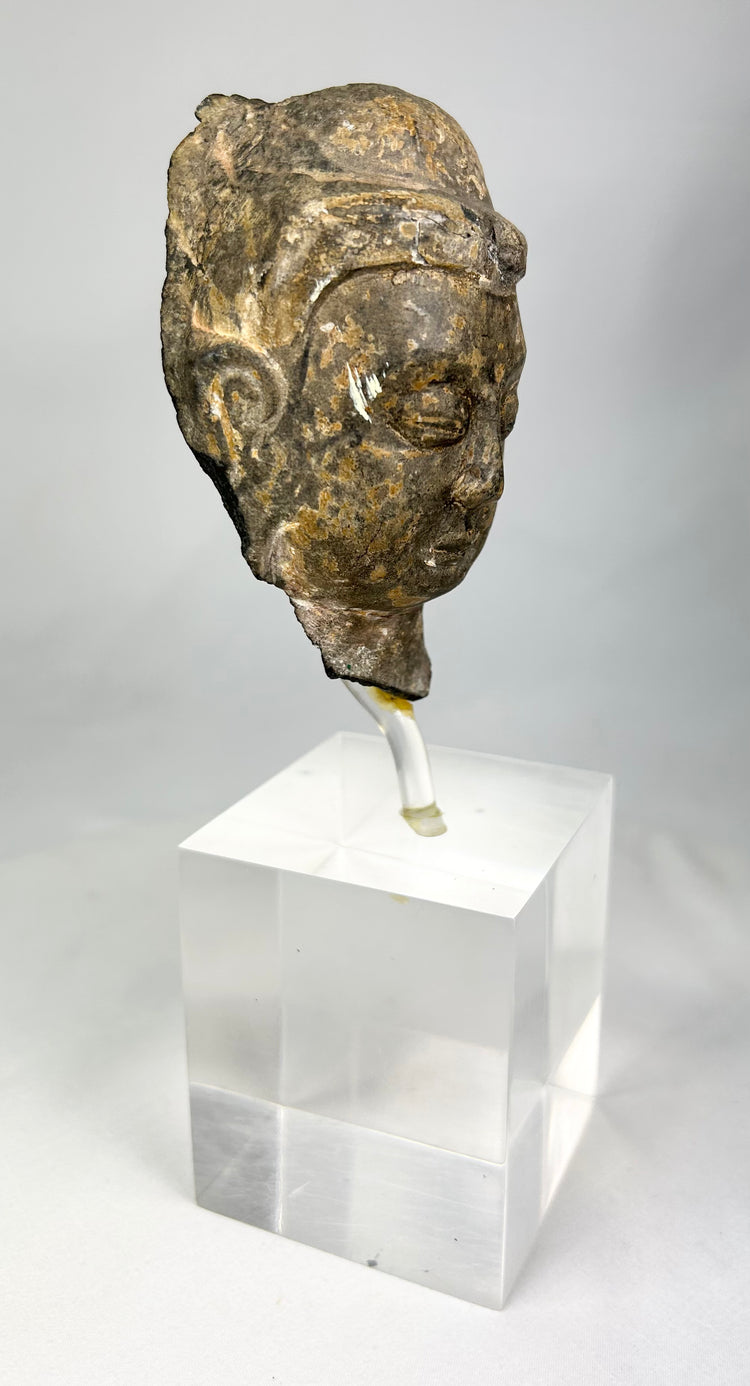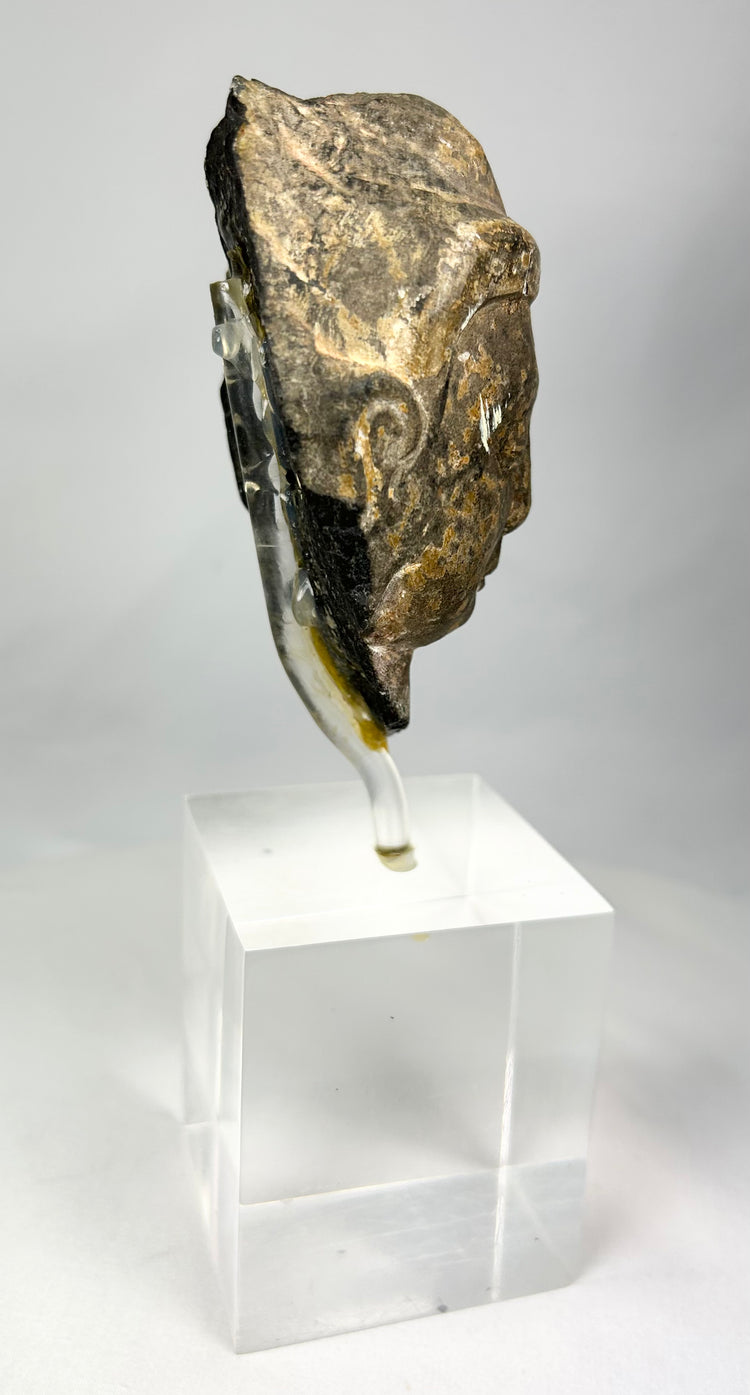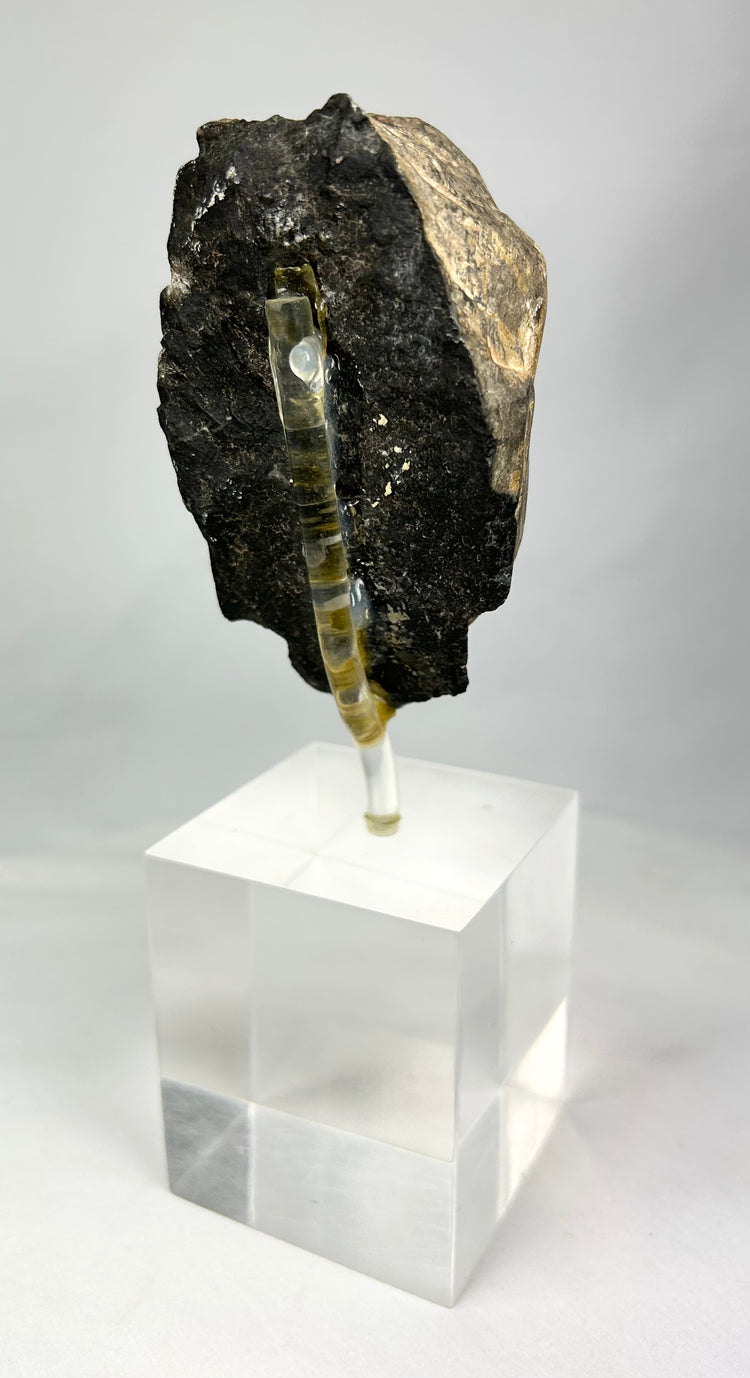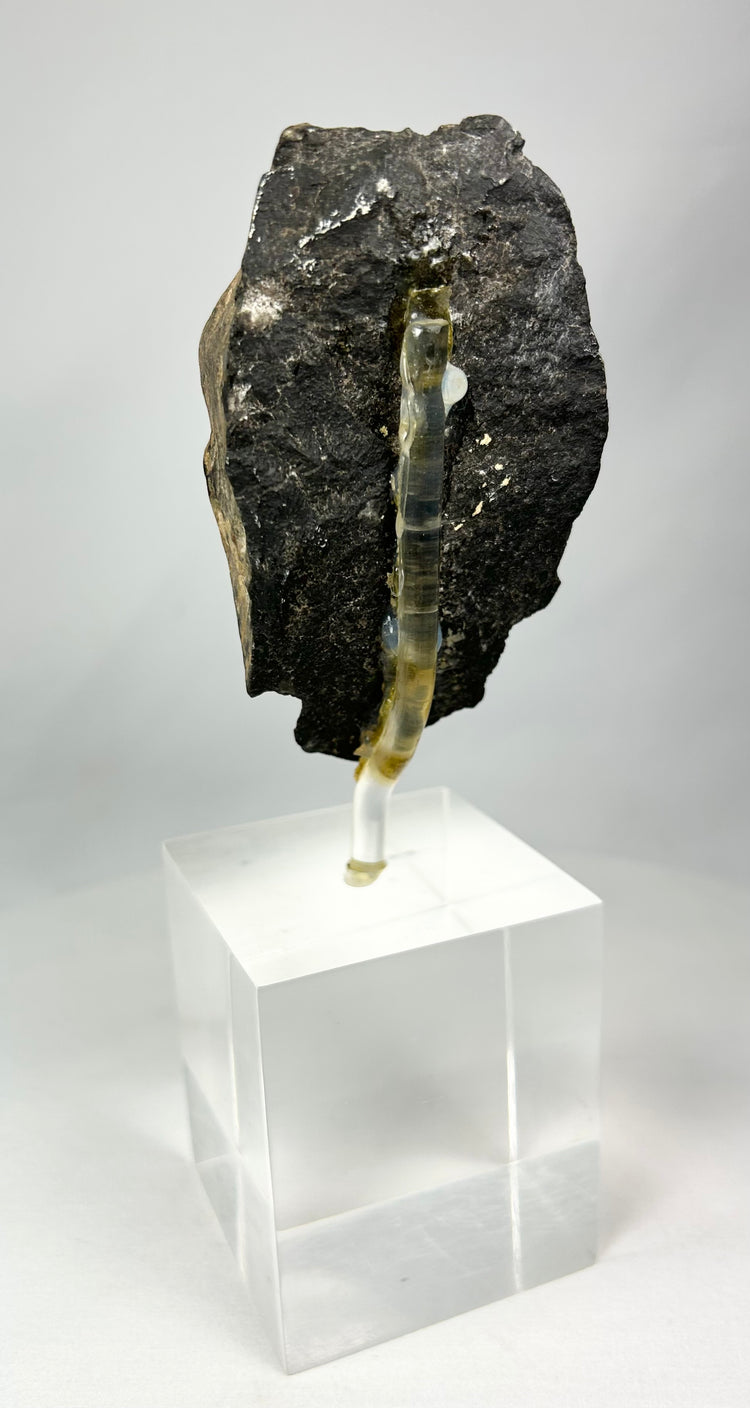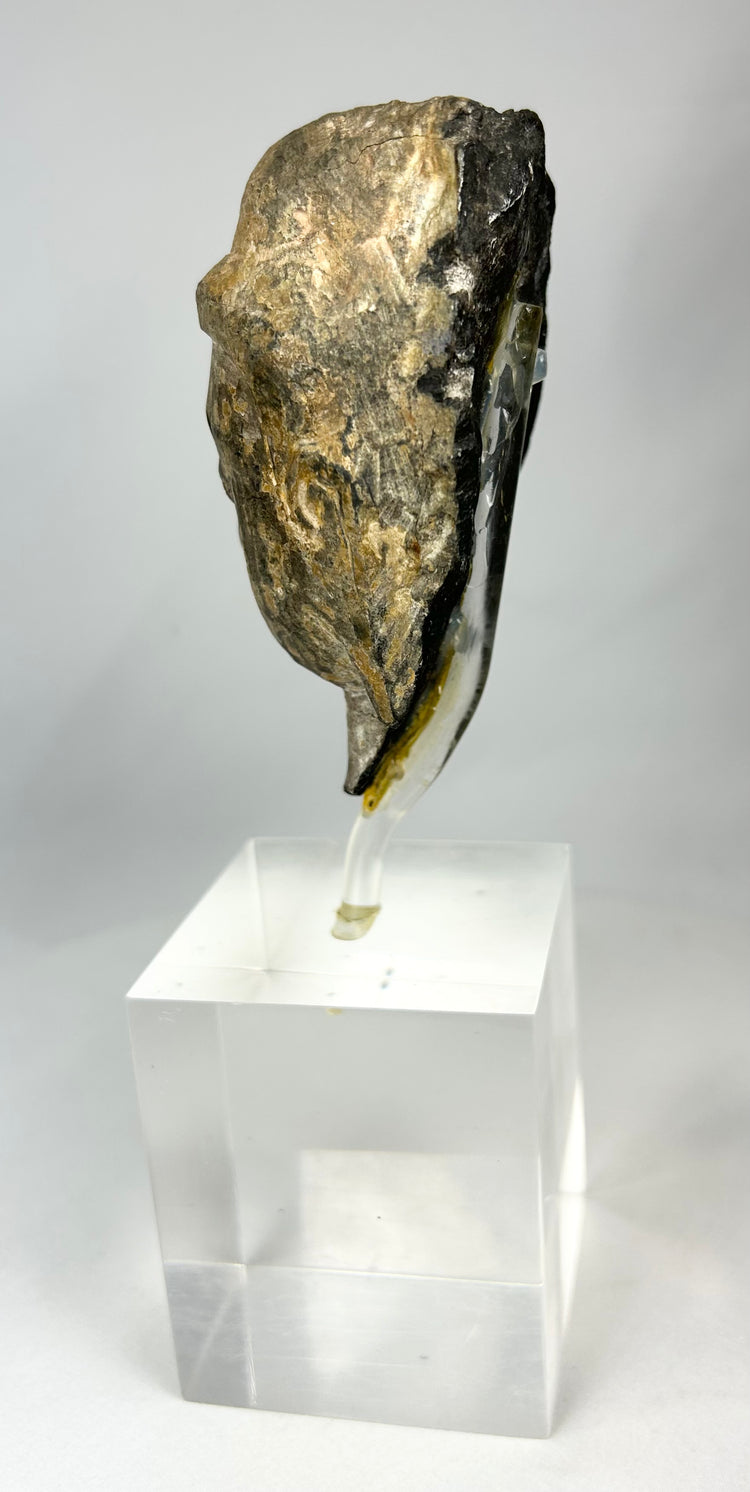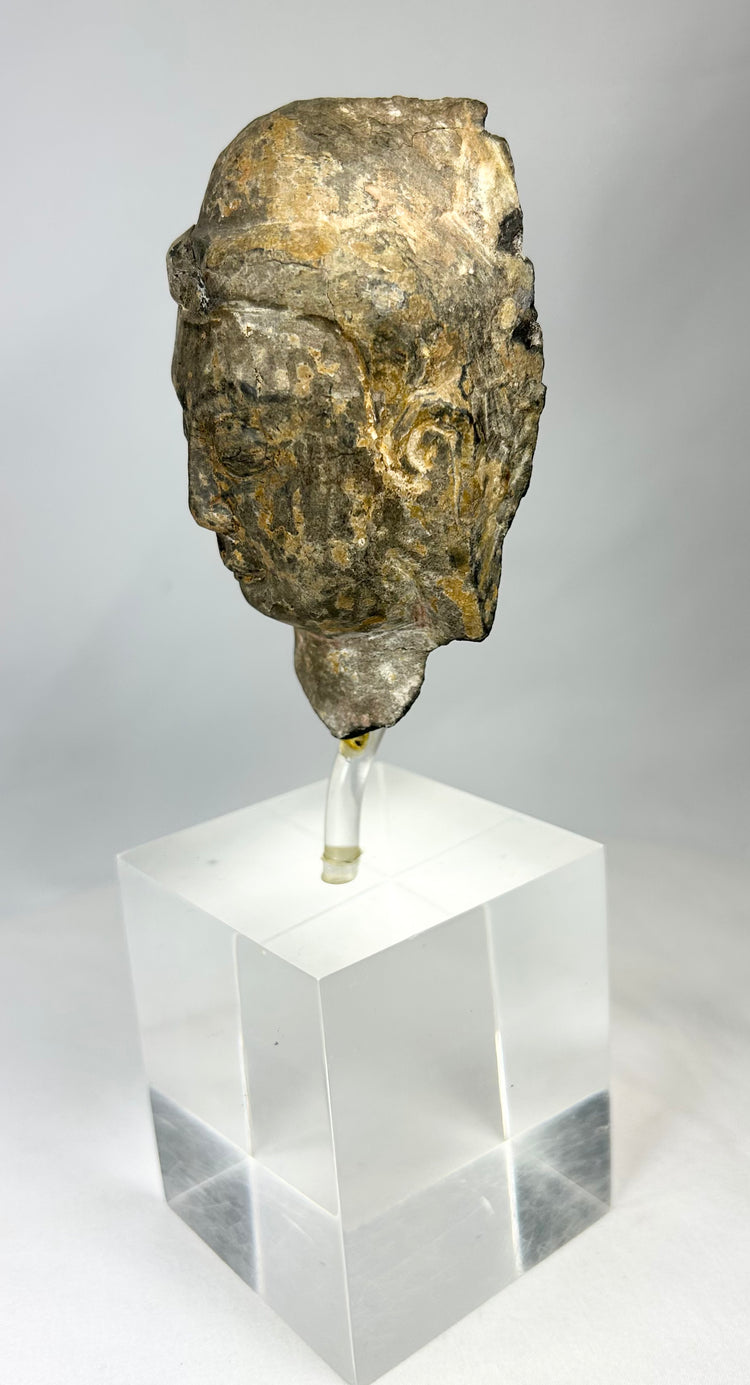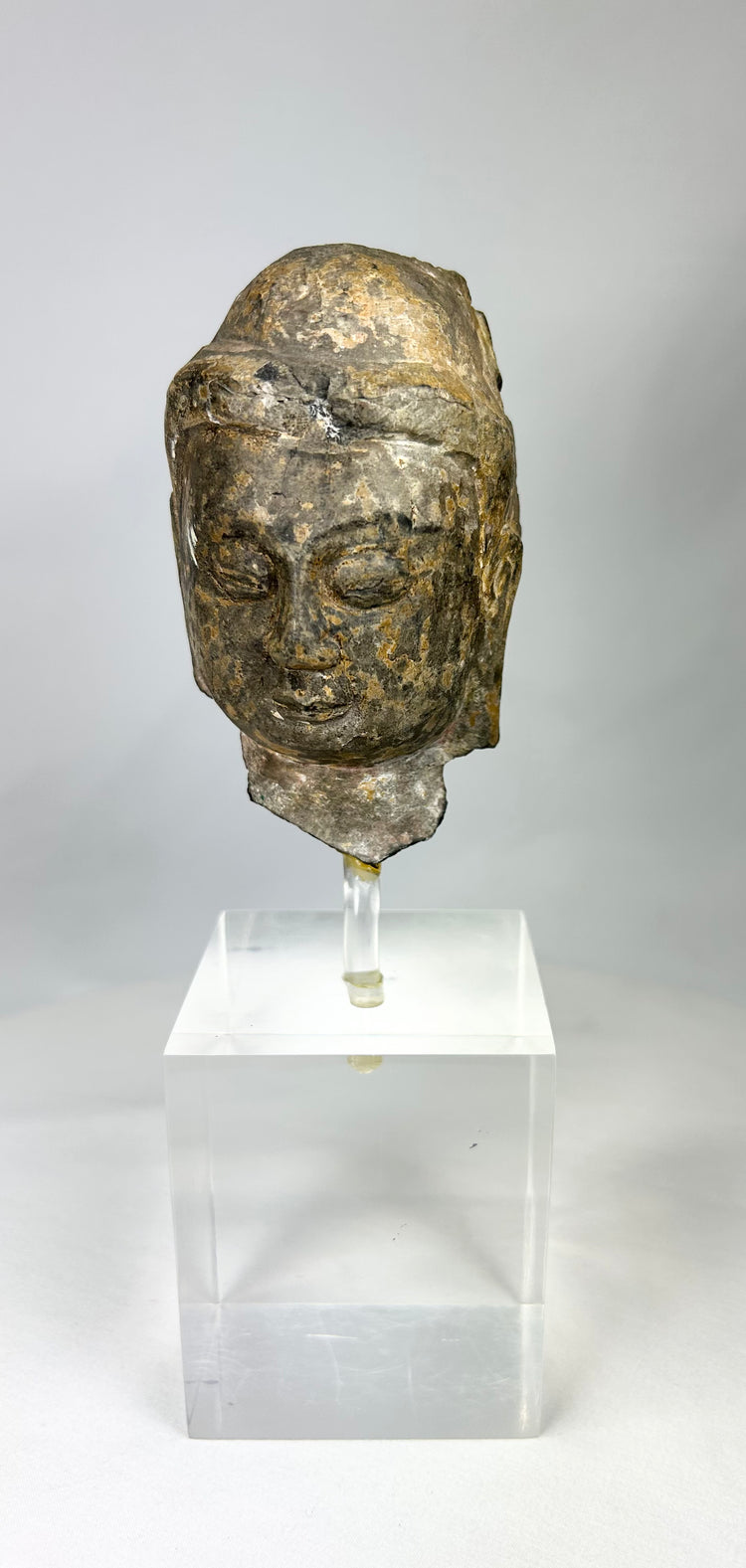Gandharan Buddha Head | Carved Stone Fragment with Greco-Roman Features | 3rd–5th Century CE
Description
More
Less
Historical Context & Origin
Region: Gandhara (modern-day northern Pakistan and Afghanistan)
Material: Carved stone
Period: 3rd–5th Century CE
Description
This exquisite Buddha head fragment, dating from the Gandharan period, exemplifies the fusion of Greco-Roman artistry with Buddhist iconography. Measuring approximately 8.25 inches by 2.5 inches by 2.5 inches, the sculpture captures the serene expression and refined craftsmanship that defined Gandharan art. Half-closed eyes, a gentle smile, and naturalistic features evoke peace and enlightenment, while the subtle detailing of the hair and facial contours highlight the technical mastery of Gandharan artisans. The surface patina and weathering further authenticate its antiquity, lending depth and historical resonance to this spiritual relic.
Features
- Serene expression with half-closed eyes and soft smile
- Naturalistic Greco-Roman–inspired proportions and facial rendering
- Delicately carved hair and facial contours
- Surface patina and weathering enhancing authenticity
- Mounted on a modern clear acrylic stand for elegant display
Cultural Significance
Gandharan art represents a profound cultural synthesis, blending Hellenistic realism with Buddhist spirituality. This fragment would have originally formed part of a larger devotional sculpture, likely placed in a temple, stupa, or monastic setting for meditation and worship. As a product of Silk Road cross-cultural exchanges, it reflects the transmission of Buddhist imagery from South Asia into Central and East Asia, where Gandharan style deeply influenced later Buddhist art traditions.
Condition
Well-preserved fragment with stable form and visible natural weathering. Mounted securely on a modern clear acrylic stand.
Dimensions (approximate)
Height: 8.25 in
Width: 2.5 in
Depth: 2.5 in
Age
3rd–5th Century CE
Learn More
Explore the artistic traditions and symbolism of Buddhist sculpture through a museum-held example: Figural Head of Buddha – Royal Ontario Museum
Discover other authentic Buddha figures and Buddhist artifacts in our collection: View Buddha Sculptures at Relic & Rarity
Description
Historical Context & Origin
Region: Gandhara (modern-day northern Pakistan and Afghanistan)
Material: Carved stone
Period: 3rd–5th Century CE
Description
This exquisite Buddha head fragment, dating from the Gandharan period, exemplifies the fusion of Greco-Roman artistry with Buddhist iconography. Measuring approximately 8.25 inches by 2.5 inches by 2.5 inches, the sculpture captures the serene expression and refined craftsmanship that defined Gandharan art. Half-closed eyes, a gentle smile, and naturalistic features evoke peace and enlightenment, while the subtle detailing of the hair and facial contours highlight the technical mastery of Gandharan artisans. The surface patina and weathering further authenticate its antiquity, lending depth and historical resonance to this spiritual relic.
Features
- Serene expression with half-closed eyes and soft smile
- Naturalistic Greco-Roman–inspired proportions and facial rendering
- Delicately carved hair and facial contours
- Surface patina and weathering enhancing authenticity
- Mounted on a modern clear acrylic stand for elegant display
Cultural Significance
Gandharan art represents a profound cultural synthesis, blending Hellenistic realism with Buddhist spirituality. This fragment would have originally formed part of a larger devotional sculpture, likely placed in a temple, stupa, or monastic setting for meditation and worship. As a product of Silk Road cross-cultural exchanges, it reflects the transmission of Buddhist imagery from South Asia into Central and East Asia, where Gandharan style deeply influenced later Buddhist art traditions.
Condition
Well-preserved fragment with stable form and visible natural weathering. Mounted securely on a modern clear acrylic stand.
Dimensions (approximate)
Height: 8.25 in
Width: 2.5 in
Depth: 2.5 in
Age
3rd–5th Century CE
Learn More
Explore the artistic traditions and symbolism of Buddhist sculpture through a museum-held example: Figural Head of Buddha – Royal Ontario Museum
Discover other authentic Buddha figures and Buddhist artifacts in our collection: View Buddha Sculptures at Relic & Rarity
You May Also Like




























